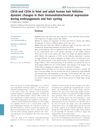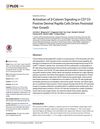The Role of Neprilysin in Regulating the Hair Cycle
February 2013
in “
PLoS ONE
”
TLDR Neprilysin is important for hair growth regulation.
The study investigated the role of neprilysin (NEP), an enzyme that degrades elastin, in regulating the hair cycle in rats and mice. NEP activity and expression were found to increase during the early anagen phase and decrease from catagen to telogen. Immunostaining revealed changes in NEP localization throughout the hair cycle. To assess NEP's role, a specific inhibitor (NPLT) was applied to the skin of C3H mice, resulting in significantly suppressed hair growth. These findings suggested that NEP played an important role in regulating the hair cycle, particularly through its increased expression and activity in the follicular epithelium during early anagen.






